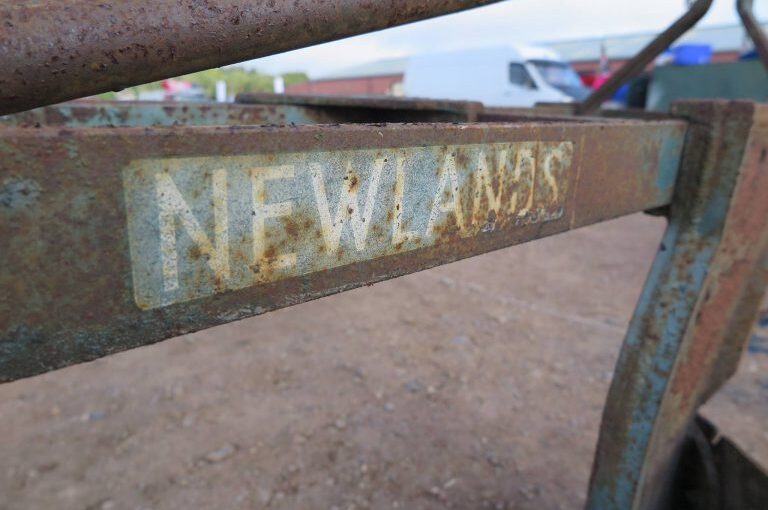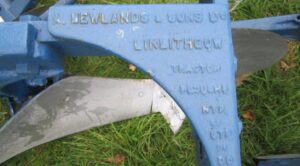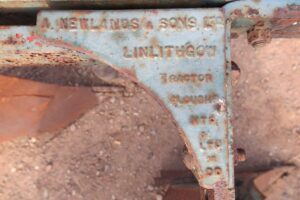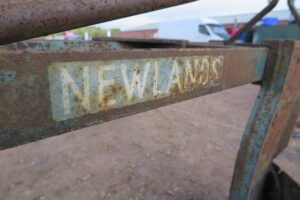In July 1879 an advert appeared in The Scotsman newspaper for a business premises close to the railway Station at Linlithgow. It had been recently erected by an implement maker, George Ponton. He had been at Grougfoot, Linlithgow in 1848 and by 1850 at Woolstoun, Linlithgow. On 2 July 1878 the North British Agriculturist newspaper announced that George Ponton has gained more commodious premises near the railway station, Linlithgow, from Provost Road Works, Linlithgow.
“Linlithgowshire
Agricultural Implement Works for sale
To be sole by private tender, in consequence of the proprietor giving up business:-
First, those new and commodious premises recently erected, and now occupied and carried on by Mr George Ponton, at Linlithgow, close to the railway Station, area half an acre, held in feu, with Smith’s shops, fitting shops, and other premises thereon. Also, a tenement of dwelling-houses. Premises all enclosed, and eminently adapted for carrying on an implement making or engineering business.
Second-the goodwill of the business so long and successfully carried on by the Proprietor’s father, and afterwards by himself at Woolston and Linlithgow, together with the rights and the patterns for implements in ploughs and other implements.
Mr Ponton has long had a considerable export trade, and his name as an implement maker being well-known not only at home but in the Colonies, the present exposure offers one of the finest openings in Scotland to a party of moderate capital.
The premises can be inspected, and all information given on application to Mr Ponton, at Linlithgow; or to Robt J. Jamieson, solicitor, Bo’ness, the latter of whom will show the title-deeds.
Offers will be received by Mr Ponton, at the works; or by Mr Jamieson, up to 14th August proxo. The highest or any tender may not be accepted.
Linlithgow, 21st July 1879.”
Ponton was a noted plough maker, having been awarded a number of prizes by the Highland and Agricultural Society of Scotland for his ploughs. They included an award of 2 sovereigns for best two horse plough for general purposes in 1850, and an award of 3 sovereigns for best two horse plough for general purposes in 1857. He regularly exhibited at the Highland Show from 1848 to 1877.
However, by July 1879 he had decided that he was giving up business. The site and the business offered a good opportunity for an implement making or engineering business. Who purchased the site and business?
There was a ploughmaker in north-east Scotland who saw the advert and was looking for opportunities to develop his business. He was Alexander Newlands of Inverurie. He was trading from a premises in 43 High Street. He had been in business in that address from at least 1864. That was an important year for him as he exhibited at the Highland Show which was being held in Aberdeen. This was a two horse plough with steel mould and a ridging or drill plough, both of which he made himself.
On 11 September 1880 he sold, by public sale, the property at 43 High Street so that he could move to Linlithgow. In 1884 his son, also named Alexander, joined him in business, which became Alexander Newlands & Son, Provost Road, Linlithgow.
From the 1880s onwards Alexander Newlands & Son specialised in the making of ploughs, grubbers and harrows. Later it ventured into horse rakes. In 1900 its manufactures included a two horse swing plough; medium drill plough with marker; baulking drill plough; combined drill and potato plough; one horse drill grubber; horse or drill hoe as a drill grubber; house or drill hoe as a ridging up plough; field grubber; diamond harrows; and drill scarifier.
The company was a progressive one. From 1884 when the young Alexander joined his father, it exhibited nearly every year at the Highland Show and advertised in the agricultural newspaper of the day, the North British Agriculturist. In later years advertising was also under taken in The Scottish Farmer.
Even after Alexander senior died in 1907 the company continued to be an innovative one. By 1914, it acted as an agent for McCormick and Bamford, and in 1919 was selling the Austin farm tractor. In the following year it became an incorporated company: Alexander Newlands & Sons Ltd. Two years later in 1922, it took the important step to participate in the famous exhibition of farm tractors and tractor implements arranged by the Royal Highland and Agricultural Society of Scotland. In that year it also won a silver medal for its self-lift brake harrow at the Highland Show at Dumfries. In 1934 it exhibited as a new implement a cultivator and ridging attachment for tractors.
It was its ploughs that Newlands continued to be closely associated. In the 1950s and 1960s they couldn’t be beaten in the ploughing matches in the Lothians. Newlands carried away the prizes. Even the followers of Ransomes turned to Newlands.
Alexander Newlands & Sons Limited continued in business until 9 September 1986 when the company was dissolved.
Next time someone asks you to list the famous plough makers of Aberdeenshire, remember to include Alexander Newlands. He had a reputation that went far beyond the boundaries of the county of his birth.



